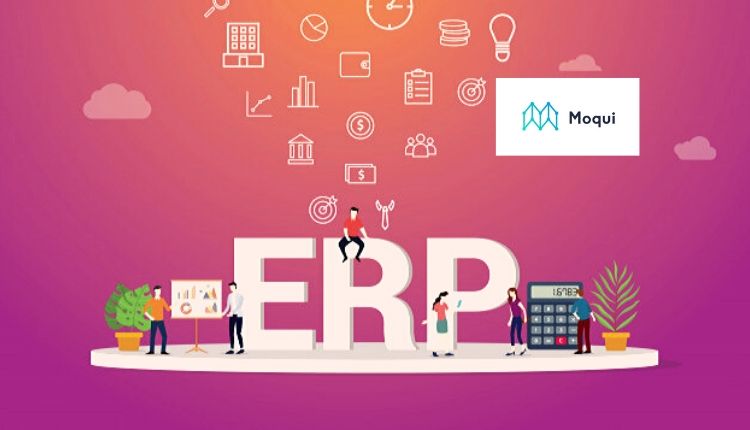
Enterprise Resource Planning (ERP) systems play a central role in synchronizing business processes across departments. When built using the Moqui Framework, these applications bring distinct advantages in terms of flexibility, efficiency, and scalability.
Moqui, an open-source enterprise application framework, stands out for its robust architecture and developer-first design. Here in this article, we will discuss the top 11 benefits of using Moqui Framework for developing ERP applications.
1. Open-Source Structure Reduces Cost Barriers
Moqui Framework is entirely open-source, governed under the Apache License 2.0. Businesses can implement ERP solutions without licensing fees, minimizing upfront investment.
Development teams can inspect, modify, and customize the source code freely. This unrestricted access empowers internal developers to create long-term ERP solutions without dependence on third-party vendors.
Companies gain control over their infrastructure and reduce operational expenses. Budget allocation can shift from license payments to innovation and development. The absence of vendor lock-in encourages modular deployments that match specific organizational needs.
2. Entity-Driven Architecture Enhances Data Integrity
Moqui employs an entity-driven architecture that defines data relationships in a central and reusable model. Entities represent business data in structured, XML-based definitions. This design enforces consistent data handling across modules, reducing discrepancies.
By managing business rules at the entity level, developers reduce redundancy and improve maintainability. Transactions stay reliable even in complex workflows. Centralizing data definitions also improves traceability and debugging in enterprise-scale systems.
3. Rapid Development with Reusable Components
Moqui includes an extensive library of reusable components and prebuilt applications, such as PopCommerce. These serve as foundations for new modules, saving time in development cycles. Its service-oriented approach, built on Groovy and Java, encourages modular design.
Developers can stitch together pre-configured services using XML-based actions or create custom logic with Groovy scripts. This speeds up prototyping and reduces time-to-deployment. Shared libraries simplify integration across applications while maintaining a clean codebase.
4. Built-In Security Controls
Security is baked into the Moqui architecture. Authentication and authorization mechanisms are preconfigured using artifact-based access control lists. Permissions are assigned at the service, screen, and entity level.
Access control granularity ensures that users only interact with the data and processes assigned to their role.
Moqui also supports secure session management, encrypted communications, and audit logging. These features help enforce compliance with enterprise security policies without requiring extensive third-party tools.
5. Scalable Architecture for Enterprise Workloads
Moqui supports large-scale workloads through its robust service engine and efficient data caching. Designed for horizontal scalability, Moqui can operate with distributed services and clustered databases.
Its runtime environment integrates with Java Virtual Machine (JVM) ecosystems, allowing deployments across cloud and on-premise infrastructures.
The framework uses distributed job scheduling and asynchronous processing to handle high transaction volumes. By separating services from web interfaces, it supports API-based architecture suitable for enterprise-level integrations.
6. Flexible UI with XML Screen Widgets
Moqui employs a powerful screen rendering system built on XML-based widgets. These allow developers to define data-driven user interfaces declaratively. UI elements bind directly to services and entities, ensuring a seamless flow of information.
Themes and styling can be adapted with standard CSS and JavaScript, allowing ERP applications to align with corporate branding. Developers can customize screens without rewriting core logic, leading to better user experience and streamlined updates.
7. Workflow Automation via Services and Actions
The Moqui Framework enables the automation of business processes using service calls and action scripts. Business workflows, including approvals, inventory updates, and financial transactions, can be expressed in modular XML configurations.
Service definitions abstract away low-level operations, allowing workflows to chain services and respond to events. Developers create dynamic process flows that are easy to modify and audit. Such flexibility supports evolving operational demands without disrupting the existing architecture.
8. Real-Time Reporting and Analytics
Moqui includes integrated tools for reporting and analytics. Services can generate data outputs in multiple formats including JSON, CSV, and XML. These outputs feed into dashboards, custom reports, or external analytics platforms.
Built-in data visualization and querying tools provide insights into business operations in real time. Organizations can track performance metrics, identify bottlenecks, and adapt to changes with minimal delay. Analytical tools can be embedded directly into ERP workflows to support decision-making.
9. Easy Integration with External Systems
Moqui supports REST and SOAP web services natively. External systems can connect to Moqui ERP modules through standard APIs. Integration with payment gateways, logistics providers, and CRMs becomes seamless.
Message-driven architecture allows asynchronous communication with external systems. Data mapping and transformation utilities simplify the exchange of structured data. These features ensure smooth integration with partner ecosystems, legacy applications, and third-party services.
10. Continuous Updates and Community Contributions
As an open-source initiative, Moqui benefits from ongoing contributions by its community and core maintainers. Frequent updates improve framework performance, add features, and fix bugs. Community-driven development keeps the framework responsive to industry trends.
Documentation, sample applications, and forums support developers during implementation. Knowledge-sharing reduces development friction and accelerates solution delivery. Organizations adopting Moqui-based ERP systems can expect a steady stream of innovations without proprietary constraints.
11. Complete Control Over Customization
ERP systems developed on Moqui offer unparalleled flexibility in customization. Developers can tailor workflows, screens, reports, and logic without waiting on third-party updates. Source-code access ensures changes reflect instantly across deployments.
Unlike off-the-shelf ERP solutions, Moqui allows adapting to niche business processes. Custom extensions integrate into the core system cleanly. This reduces risk when introducing changes and promotes long-term adaptability.
Conclusion
Moqui Framework delivers a strong foundation for building tailored ERP solutions that meet modern enterprise demands.
Its open-source nature, modular structure, and powerful tooling position it as a practical choice for developers and organizations seeking to build scalable and secure ERP systems. Each benefit – from cost savings to extensibility – adds measurable value in real-world deployments.
Adopting Moqui means gaining structural flexibility, automation control, and consistent performance without being tied to proprietary ecosystems. It stands as a strategic framework for those seeking a forward-compatible ERP foundation aligned with open standards and enterprise-grade features.
Also Read:
